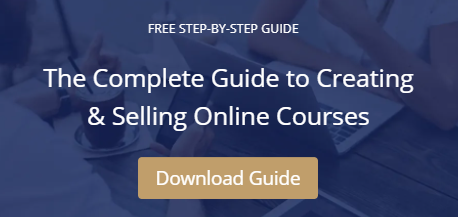In this post, Dr. Kelly Edmonds, an E-Learning Strategist, talks to us about the difference between course design and course development. Most course creators often jump right into development, without spending any time designing their course. This could sometimes result in a non-optimal learning experience for students. Dr. Kelly explains it all.
Have you heard the terms ‘design’ and ‘development’ when it comes to a course and not sure of the difference?
… and it leads you to wonder if you are missing something when building your course?
The terms are distinct and both are crucial steps to building a course that students will love. Trust me.
Basically, here is the difference followed by an overview.
| COURSE DESIGN | COURSE DEVELOPMENT |
| · Envision you course · Fill a learning need · See your students · Do some research · Map your course · Sketch the lessons · Connect the lessons · List learning activities · Compose engagement ideas · Determine learning experiences · Look for technology to match
| · Build lesson plans per module · Write lesson intros and summaries · Create content per lesson · Build multimedia pieces · Write out learning activities · Find graphics or create · Develop learning resources · Set up shell in online course · Upload content into shell spaces · Add interaction · Test course · Launch and market |
Basic of Course Design
Designing a course mostly takes place offline – you are envisioning your course and how it will serve others. You begin to determine if you want to facilitate it or not, and make it evergreen or launch a few times a year. And price it.
Mostly, you start to think about the experience of your students and how you can take them on a learning journey.
Designing a course is the most fun part.
Try the following to think creatively:
- Lay paper on the floor and use colorful markers to scribble ideas, connect them and give parts of your course titles and names
- Use a fun software, like Inspiration to compose and connect your course ideas and all its parts (i.e. lessons, activities, resources, engagement, assessments)
- Share your course ideas with a friend to verbally get clear on what you want to offer
- Draw illustrations on the mood, look and feel of your course
Then, do some research online:
- Google courses with your main topic and find out what and how they deliver
- Ask people in your online groups or your followers, if it would be of interest (also ask why or why not)
- Head over to Amazon and see if there are books on your topic and read the comments left by people (what they liked and what more they want to learn)
- Run it by your mastermind group, mentors or coach and get honest feedback
Last, go tech shopping:
There are so many options for both course platforms and multimedia creations.
I am a huge fan of Thinkific as it offers both spaces for delivering a course and marketing it. They have a nice clean layout and many course functions (quiz, forum, etc.) that are easy to set up and add. They make course creation simple and stress-free.
Other technologies you might want to consider are video and audio capturing and production. For video production of editing talking lectures or capturing narrated slides, I like Camtasia. For audio production, I like Audacity (free). For graphics, I purchase from 123RF as it has a nice collection of affordable and royalty free images.
Basics of Course Development
With your course designed & researched and technology picked, it’s time to build your course.
I build one module or section at a time. Something like this order:
- Module 1
- Module 2
- Module 3
- Course intro
- Course summary
- Activities
- Email messages/autoresponders
- Sales page
Each module would have the following:
- Topic intro and what to expect to achieve by the end of module (gets their minds ready)
- Lesson 1 (teachings using text, illustrations, audio, video, downloadable docs, etc.)
- Lesson 1 activity to have them practice or taste the info a bit
- Lesson 2-4 created the same as lesson 1
- Review all created so that it is connected, flows, and not overwhelming; adjust if needed
- Summary for the module, what they learned and next steps
For each lesson, I try to make it no longer than 20 minutes so the lesson is consumable and keeps the attention of adult learners.
For the learning activities, I try to make them as attainable (think bite-size) with some form of feedback to let my students know if they understand (and I want to know too!). I try to make them no longer than 30-45 minutes to perform.
For multimedia productions, I might add placeholders/space for these to do another day. Before producing multimedia (i.e. audio, video, graphics) I outline the script or intent of the piece so it nicely aligns with my lesson. Or, I repurpose something I made before.
Want to Design with Me and Thinkific?
You are just in time to join a 5-day trip on designing and developing one lesson for your future course! Both Thinkific and I will be leading your trip with lots of support and creative ideas.
And it’s meant to be fun!
Dates for this trip: Monday, June 27 to Friday, July 1
(Just in time to get your summer course creation going!)
The itinerary:
- Day 1 – Get set-up in an online group and course platform
- Day 2 – Sketch one lesson and compose a bit of content
- Day 3 – Upload your lesson content to the online platform
- Day 4 – Design and add an engaging activity for your lesson
- Day 5 – Showcase your lesson and review the work of others
What are you waiting for? Jump on the bandwagon and join other course builders today!







